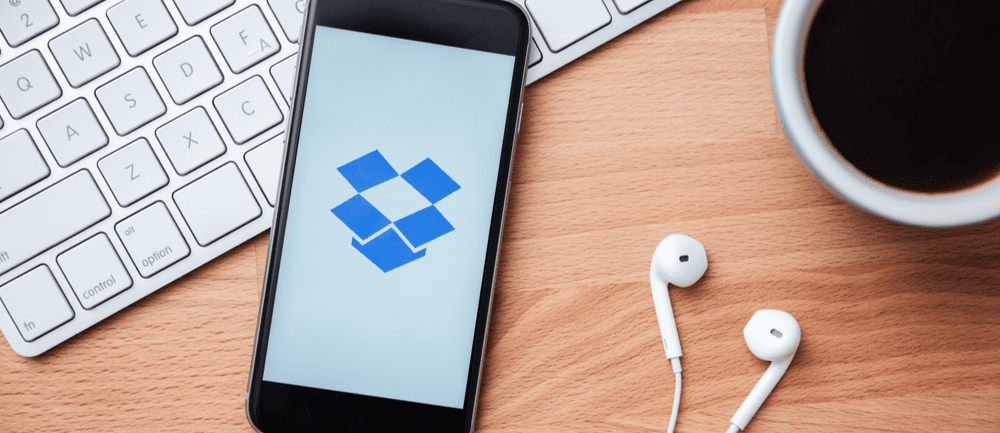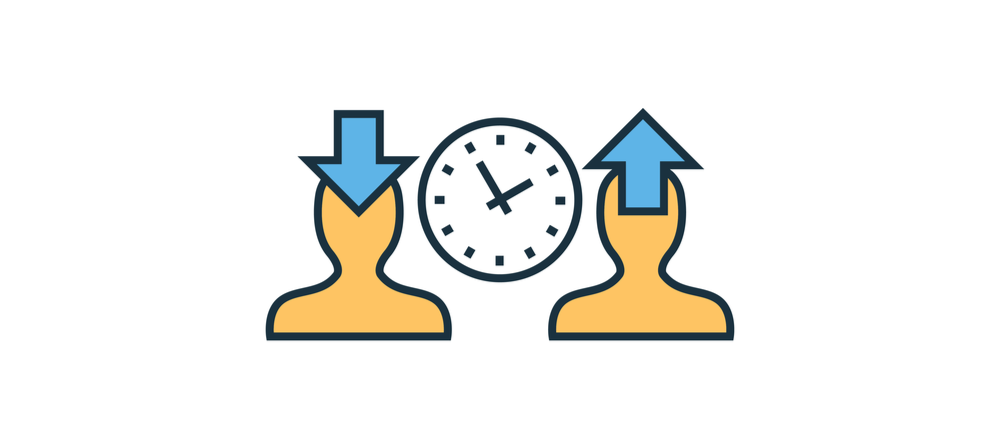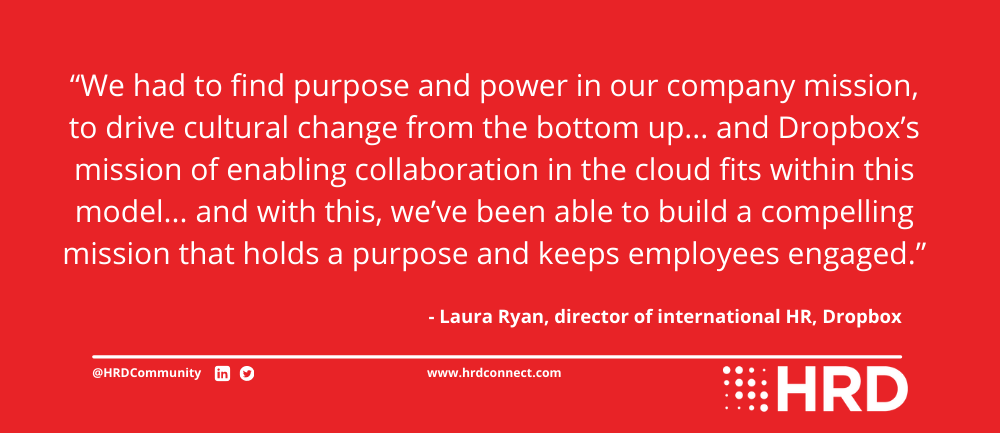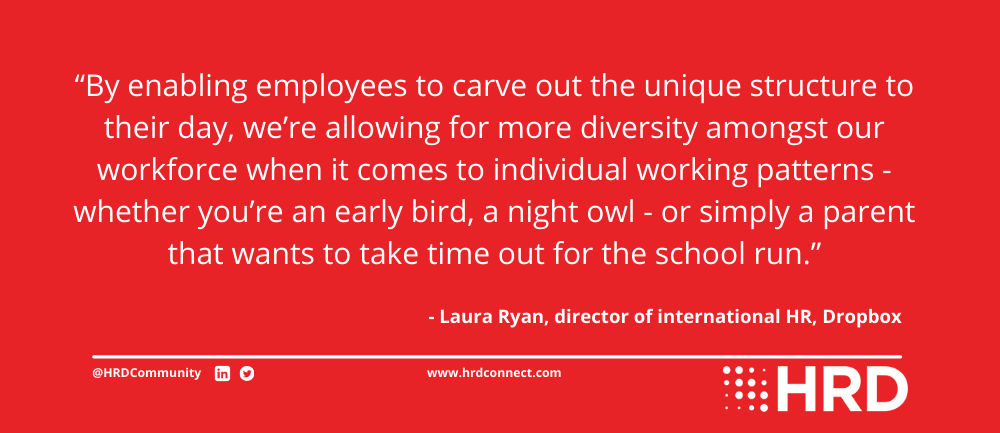-
Provided by

- Date published: Feb 28, 2022
- Categories
As one of the world’s foremost cloud storage specialists, Dropbox has strived to get ahead of the remote working trend since the start of the pandemic. Taking a cue from its own collaboration tools, it has rebuilt its entire organisational structure around real-time communication – and reaped immediate benefits from doing so.
Here talk to Laura Ryan, Dropbox’s director of International HR, about he reasons for this decisive shift.
We all check our emails when we’re on holiday, right?
Try as we might, we can’t just help it. We need to reassure ourselves that the company hasn’t imploded in our absence and we haven’t left some awful mess for someone else to clear up. It disrupts our holiday and prevents us from fully switching off, but, well, it’s just the way of the modern world.
Except if you work for Dropbox, that is.
In this case, you can’t access your emails, or any other work-based communication while you’re away, because the company locks you out. Yep, senior managers actively stop you doing anything to help the business while you’re away – even if you’re a senior employee with loads of direct reports.
It’s all part of Dropbox’s ‘asynchronous by default’ approach. A culture shift which attempts not to recreate the old office structure in a virtual setting, but build something completely different, a new paradigm which respects each person’s boundaries and helps avoid the dreaded burnout.
It’s an approach based on trust, meticulous organisation and, above all, a realisation that technology can be as much a hindrance as a help in the new world.
“We feel we’re providing the most consistent experience to our employees, and a level playing field,” Laura ryan says. “We’re leveraging the benefits of remote work, without losing that in-person element.
“By encouraging employees to remove all unnecessary meetings from their calendars, and to be more intentional about scheduling live conversations, our people have been able to shift from “all day syncs” to “async by default”. This has brought more flexibility and focus to their day.”

More freedom, more stress
When we talk about the consequences of Covid-19, burnout is almost always the first problem that arises. The latter has almost become a symptom of the former, so closely are they intertwined.
According to polls conducted in the U.S., 83% of people are suffering from workplace stress. In the UK, six in 10 workers say they are more stressed now than when the pandemic erupted in March 2020.
But why? We spend less time commuting, and more time at home with our loved ones, than we did before Covid. So the fact that we’re more stressed now seems counter-intuitive, does it not?
According to the future of work theorists, it’s all a question of efficiency – or a lack thereof. We haven’t recalibrated our working practices to match our new-found freedoms, and so we’re filling all that extra time with repetitive chores.
In fact, we’re drowning in emails, direct messages and endless video calls. As a litany of studies have shown, communication fatigue is a central cause of burnout for millions of employees. We’re locked in a cycle of hyper-responsiveness; with the office door no longer providing a boundary and reference-point, we feel we need to respond to work messages straightaway, at all the times of the day. We don’t just work our own hours anymore – we work everyone else’s, too.
The theorists are unanimous: async is the answer. We need to adopt schedules that actually suit us, and respect one another’s right to follow them. To phase out email and direct messaging in favour of project management tools that allow us to update our colleagues in our own time.
To choose not just where we work, but when we work.

This is the north star that is guiding Dropbox.
Async is the apex of a wider emphasis on ‘Virtual First’ practices. Dropbox has proudly published this blueprint as an online toolkit, available to anyone who fancies a peek. Everything in this toolkit is designed to promote distributed working, encouraging efficiency and personal choice at every touchpoint.
Dropbox’s strategy was guided by its own experience of stress and burnout, in the early months of lockdown.
Employees wanted to work remotely – that much was made abundantly clear by internal surveys, which showed that 74% of the workforce wanted to work away from the office at least part of the time. However, like many other companies, Dropbox’s early experiments gave rise to an ‘always-on’ culture which drained the energy of its people.
“When the pandemic first hit, employees everywhere were quickly hit by Zoom fatigue”,” Laura explained. “Days filled with back-to-back video calls drained our energy, and most importantly, got in the way of doing meaningful work.”
Techniques, not just tools
So the people team decided on a shift in strategy. Rather than just continuing the old way of working on a remote basis, they drilled down into the culture and strived to create something new, an approach that would allow people to maximise the freedoms that had suddenly opened up in front of them.
The tools to facilitate this strategy were already in place. Dropbox has long utilised video conferencing technologies, as well as Slack and its own screen recording school, Dropbox Capture, which enabled staff to cut down on meetings and emails.
But having the tools is one thing: using them effectively is quite another. If these programmes are not harnessed in the right way, they can actually exacerbate our sense of fatigue.
Take Slack. According to surveys published by Vox in December 2019, employees at large companies typically send more than 200 messages on the platform every week. And unlike email, there’s no way of categorising these messages by priority, so every single titbit demands urgent action. Renowned journalist Timothy Noah, writing in The New Republic, has even accused Slack of “immersing hapless workers in conditions of managerial surveillance around the clock.”
To avoid this death-by-digital overload, Laura and her HR team have pored hours into evaluating Dropbox’s communication etiquette. They’ve worked with their colleagues, helping them decide when to communicate live – in other words, send a DM or arrange a quick videochat – and when to send updates using async tools. Anything that wasn’t strictly relevant and useful was stripped out.

Specifically, employees are advised to:
- Restrict synchronous communication to key priorities, like gaining instant decisions and building relationships, and leave the rest to async.
- Provide key information in advance of virtual meetings, so the meeting itself is time-optimised and members don’t suffer screen fatigue.
- Use tools like Monday and Trello to highlight issues that need addressing, rather than demanding that the individual concerned fix them immediately.
- Utilise Dropbox paper (the company’s own answer to Google Docs) to edit and leave comments on communal documents, so colleagues can see the updates when they log on.
- Understand that even when using real-time tools like Slack, there is no guarantee, or requirement, that a colleague will respond immediately.
This advice is backed up by surveys commissioned by Dropbox itself. For example, the company has sponsored a study of knowledge workers by The Economist Intelligence Unit, which showed that more than half of survey respondents said miscommunication has increased since work from home.
Driving change from the bottom up
Ultimately, however, it is up to each individual team to set its own rules regarding communication.
With physical bases in 10 different locations around the world, there’s simply no way Dropbox can impose hard-and-fast diktats for everyone. Each region has its own timezone, priorities and local customs to consider.
Instead, the company offers a dedicated module in its Virtual First toolkit, instructing line managers on how to create an effective communication policy. In this module, managers are encouraged to grade their tools by order of effectiveness, and ask their direct reports which software packages work best for them. There’s even a scorecard which allows managers to score the benefits of each tool and gauge the fatigue of their team.
Using this information, allied with separate modules which provide advice on how to audit meetings and create FAST (Frequently discussed, ambitious, specific and transparent) goals, managers can then create a ‘Magna Carta’ to govern their future communication policy.
The overriding goal is that individual employees become stakeholders, fostering a culture that is both self-policing and consistent with the Dropbox brand.
“We had to find purpose and power in our company mission, to drive cultural change from the bottom up,” Laura says. “We’ve seen that other companies that do this well, have a mission that closely aligns to their talent strategy – and Dropbox’s mission of enabling collaboration in the cloud fits within this model.
“We are essentially the builders and users of a product connecting teams and tools anywhere – and with this, we’ve been able to build a compelling mission that holds a purpose and keeps employees engaged.”

Employees must design their own workday
In parallel, Dropbox has done away with the concept of synchronous working days. The company is keen to ensure that each team works to a local schedule, one that suits its members and the timezone they’re based in.
Yes, Dropbox has retained a core of physical premises known as Dropbox Studios, which employees visit around once a week for face-to-face collaboration, team meetings, performance reviews and community-building events. But, when they’re not in the office, each team is encouraged to follow its own rhythm.
The new policy is based on Core Collaboration Hours, four-hour windows reserved for live meetings, aligned to the time zones where teams overlap most. Employees are expected to work together during these windows, but are otherwise free to create a schedule that works for them.
“By carving out clear, set windows of time for asynchronous and real-time collaboration, our employees have been able to work more effectively with their peers, regardless of location, whilst gaining back precious time to focus on their passion projects and personal lives.
“Initiatives such as this, alongside others, have helped to create a framework in which our employees can truly design their own workday.”
Widening the talent pool
With this freedom, and the guarantee that employees will take time off when they go away – the policy is known as ‘Unplugged paid time off’ – Dropbox hopes to preserve the wellbeing of its people and ensure they remain engaged in the company’s mission.
In fact, Laura believes this enlightened approach will help to broaden the company’s talent pool and increase the range of voices that drive Dropbox’s success.
“With the launch of new initiatives, such as our Core Collaboration Hours, we have further empowered our people to be more open about their preferences and individual working styles.
“By enabling employees to carve out the unique structure to their day, we’re allowing for more diversity amongst our workforce when it comes to individual working patterns – whether you’re an early bird, a night owl – or simply a parent that wants to take time out for the school run.”

Indeed, while the asynchronous revolution is still at an early stage – Laura admits that “like many, we’re treading an unmarked path in the shift to this new way of working and we will have to learn as we go,” the benefits are already apparent.
“In many ways, the shift to an online environment has been a great equaliser for some people, having a positive effect on employee engagement,” she continues.
“With reduced pressure on physical presence, some individuals find that they are more comfortable speaking to larger groups on platforms such as Zoom. In some cases, this has allowed for greater engagement and more diverse perspectives, from people who may now feel more confident in contributing to the discussion.
“Outside of presenting, the virtual environment has also enabled us to further step away from presenteeism and outdated mantras around hours spent online, helping employees to focus on what really matters – actual results. Meanwhile, education on how to engage with others in a virtual world, such as being clearer and more intentional in how we communicate with others, has helped teams to keep motivated.
“Lastly, we believe that the in-person element to work still has an essential role in maintaining creativity, community and a sense of company culture.”
So while millions of people around the world use Dropbox’s products to negotiate the brave new normal, the company itself is determined to lead by example.
Everyone is working in their own version of real time. Together, they’re building a legacy to last.
